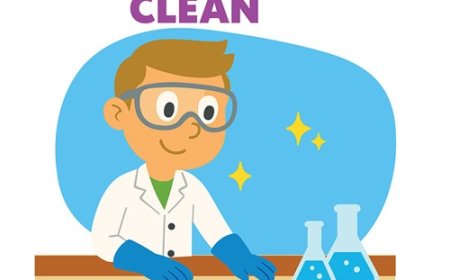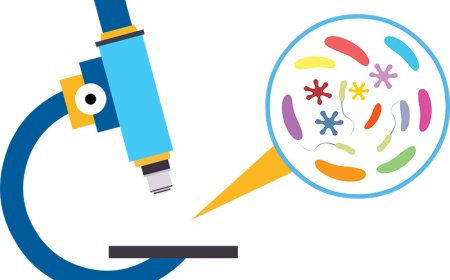Laboratory Safety Rules Every Student Should Know
Learn the most important laboratory safety rules to follow in science class including protective gear safe handling of materials and emergency procedures
🌟 Introduction
Science experiments are exciting, but the laboratory can be dangerous if rules aren't followed. Laboratory safety rules protect you, your classmates, your teacher, and the equipment you use. Whether you're mixing chemicals, heating liquids, or measuring substances, safety is always the first priority.
By following clear safety guidelines, you can focus on learning and discovery without unnecessary risks. These rules aren't just for school-they are the same safety principles used in professional science labs worldwide.
🔍 What are Laboratory Safety Rules?
Laboratory safety rules are guidelines designed to prevent accidents, protect people, and ensure experiments are done responsibly. These rules include wearing the correct protective equipment, handling tools and materials carefully, and knowing what to do in case of an emergency.
💡 Why are Laboratory Safety Rules Important?
-
Prevent injuries - Following rules reduces the risk of burns, cuts, spills, or chemical exposure
-
Protect equipment - Careful handling prevents damage to lab tools and instruments
-
Ensure accurate results - Safe practices reduce mistakes caused by accidents or contamination
-
Prepare for emergencies - Knowing safety procedures helps you act quickly if something goes wrong
-
Build lifelong habits - Learning safety in school prepares you for careers in science, medicine, and engineering
🧪 Examples of Laboratory Safety in Action
-
Wearing goggles and gloves when mixing chemicals
-
Never tasting or smelling substances unless instructed to do so
-
Keeping work areas clean and free of clutter
-
Following proper disposal procedures for chemicals and broken glass
-
Knowing the location of fire extinguishers, safety showers, and eye wash stations
✨ Fun Facts
-
Safety goggles were invented in 1880 to protect glassblowers' eyes from heat and sparks
-
NASA scientists wear specialized lab coats made from flame-resistant materials when working with rocket fuel
-
Some labs use robots to handle dangerous chemicals, keeping people safe
📌 Key Takeaways
-
Lab safety rules protect people, equipment, and the environment
-
Wearing protective gear is essential in most experiments
-
Knowing emergency procedures is as important as knowing the experiment steps
-
Safe labs lead to better, more accurate results
🐾 Kid-Friendly Summary
Laboratory safety rules are like the "rules of the road" for science. They help you stay safe while exploring and experimenting, so you can focus on making discoveries without worrying about accidents.
📚 Vocabulary Words
-
Protective Gear - Equipment worn to keep you safe, such as goggles, gloves, and lab coats
-
Contamination - When unwanted substances mix with your experiment
-
Emergency Procedures - Steps to follow in case of an accident or danger
-
Safety Equipment - Tools like fire extinguishers, eye wash stations, and safety showers
-
Chemical Hazard - A dangerous substance that can harm people or the environment
-
Flammable - Able to catch fire easily
-
Disposal - The correct way to get rid of waste materials
🧠 Interactive Quiz
Choose the best answer for each question.
-
Why are laboratory safety rules important?
- A. To make experiments more fun
- B. To prevent accidents and injuries
- C. To make experiments faster
- D. To avoid cleaning up
-
Which of these is NOT a safe lab practice?
- A. Wearing safety goggles
- B. Eating food in the lab
- C. Wearing gloves when needed
- D. Keeping work areas clean
-
What should you do if a chemical spill occurs?
- A. Ignore it
- B. Tell the teacher immediately
- C. Clean it up without telling anyone
- D. Leave the room quietly
-
Which item is part of protective gear?
- A. Goggles
- B. Notebook
- C. Clipboard
- D. Stopwatch
-
Where should broken glass be disposed of?
- A. In the regular trash
- B. In a special glass disposal container
- C. In the sink
- D. Anywhere convenient





















































